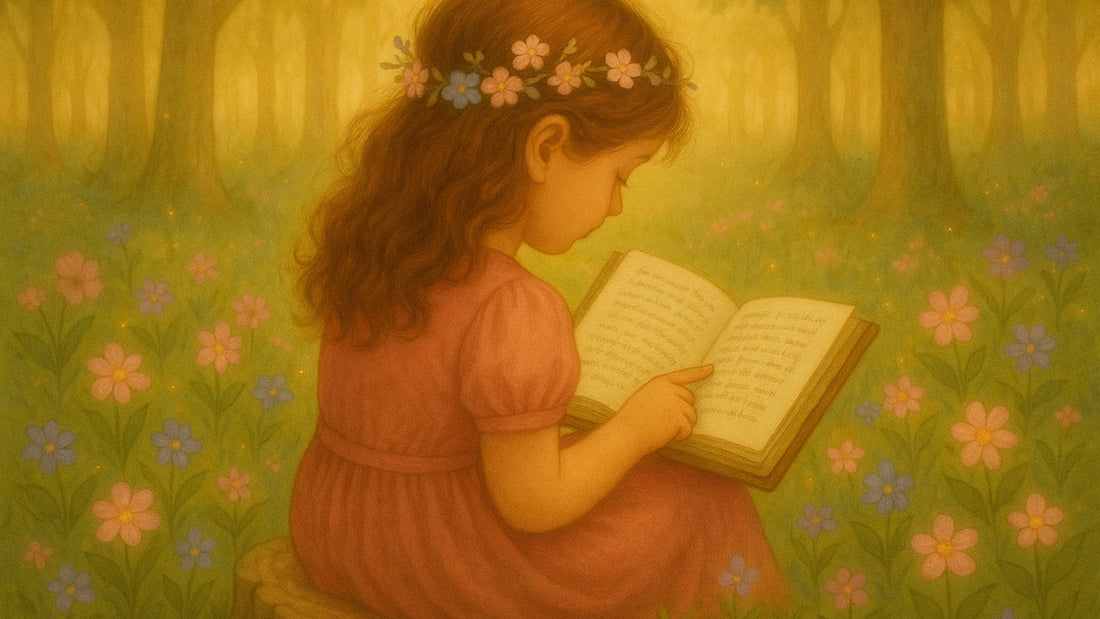
Convergence Insufficiency in Children
Share
Author: Hayley Martin
A Gentle Guide for Parents of Little Readers
At Once Upon a Charm, we believe every child deserves to see their world clearly, whether they’re reading bedtime stories, chasing butterflies, or discovering the magic in everyday moments. But sometimes, when a child struggles with reading, avoids homework, or complains of tired eyes, there may be more happening than meets the eye. One common reason is a vision condition called convergence insufficiency.
This condition can make reading and focusing on near objects surprisingly difficult for kids, even if they’ve passed a basic eye exam. The good news? It’s very treatable, especially when caught early.
Let’s explore what convergence insufficiency really means, how to spot it, and how you can help your child on the path to clearer, more comfortable vision.
What Is Convergence Insufficiency in Children?
Convergence insufficiency is a type of binocular vision disorder. That means it affects how both eyes work together as a team, particularly when focusing on things up close, like books, tablets, and craft projects.
In children with convergence insufficiency, the eyes have difficulty turning inward (or “converging”) at near distances. One eye may drift slightly outward instead of aligning with the other, which can lead to double vision, eye strain, and reading difficulties.
This isn’t a problem with eyesight sharpness, it’s a coordination issue between the eyes. Think of it like trying to steer a bicycle where the handlebars are just slightly out of sync.
Common Symptoms of Convergence Insufficiency in Kids
Children don’t always have the words to explain what they’re experiencing. That’s why this condition is often overlooked or mistaken for learning challenges or attention issues. But if you know what to watch for, you might recognize some of the signs.
Here are some common symptoms of convergence insufficiency in children:
- Complaints of blurry or double vision, especially when reading
- Headaches, particularly after school or screen time
- Eye strain or rubbing the eyes frequently
- Losing their place or skipping lines while reading
- Difficulty concentrating on near tasks
- Frustration with reading or avoiding it altogether
- Tilting the head, closing one eye, or covering an eye while reading
- Poor reading comprehension or falling behind in classwork
If you’ve ever searched “why does my child hate reading" or “why does my child see double?”, convergence insufficiency could be the answer.

How Is Convergence Insufficiency Diagnosed?
Convergence insufficiency can’t always be detected during a regular vision screening or standard eye exam at school or the pediatrician’s office. That’s because most routine exams check for clarity of vision (20/20), but not how well the eyes work together.
To get a proper diagnosis, you’ll want to visit an optometrist or pediatric eye specialist who is trained to evaluate children's vision. They’ll perform a series of simple but specialized tests to see how well your child’s eyes align, track, and focus at near distances.
How Is Convergence Insufficiency Treated?
The good news is that convergence insufficiency is highly treatable, especially in children whose visual systems are still developing.
The most effective and widely recommended treatment is vision therapy. This involves a series of customized exercises (either at home or in-office) designed to strengthen eye muscles and improve coordination. Think of it as physical therapy, but for the eyes.
Some children may also benefit from:
- Prism lenses that help guide the eyes into better alignment
- Specialized reading glasses for close-up comfort
- Supportive strategies at school or home to reduce eye strain
With consistent treatment and a little encouragement, many children begin to see improvement within weeks. And their confidence often blossoms right alongside their vision.

Your Role in Their Vision Journey
As a parent, you are your child’s greatest advocate and guide. If your little one has been struggling with reading, complaining of tired eyes, or just seems to avoid anything involving close-up focus, trust your instincts and have their vision thoroughly evaluated.
At Once Upon a Charm, we’re here to make vision care feel like part of a storybook journey. Whether your child wears magical frames with dream-like charms or simply needs a bit of extra support, we’re honored to be part of the adventure.
Keep Exploring
Want to learn more about kids’ vision challenges and how to support your child’s eyesight? Explore more articles in our Once Upon a Diagnosis section, where we gently explain everything from how to read a glasses prescription to signs your child may need their first pair of frames.
Let the Magic Begin
And when you're ready to choose a magical frame for her, we’ll be right here, tucked into our little corner of the internet, ready to help her see the world with wonder.
